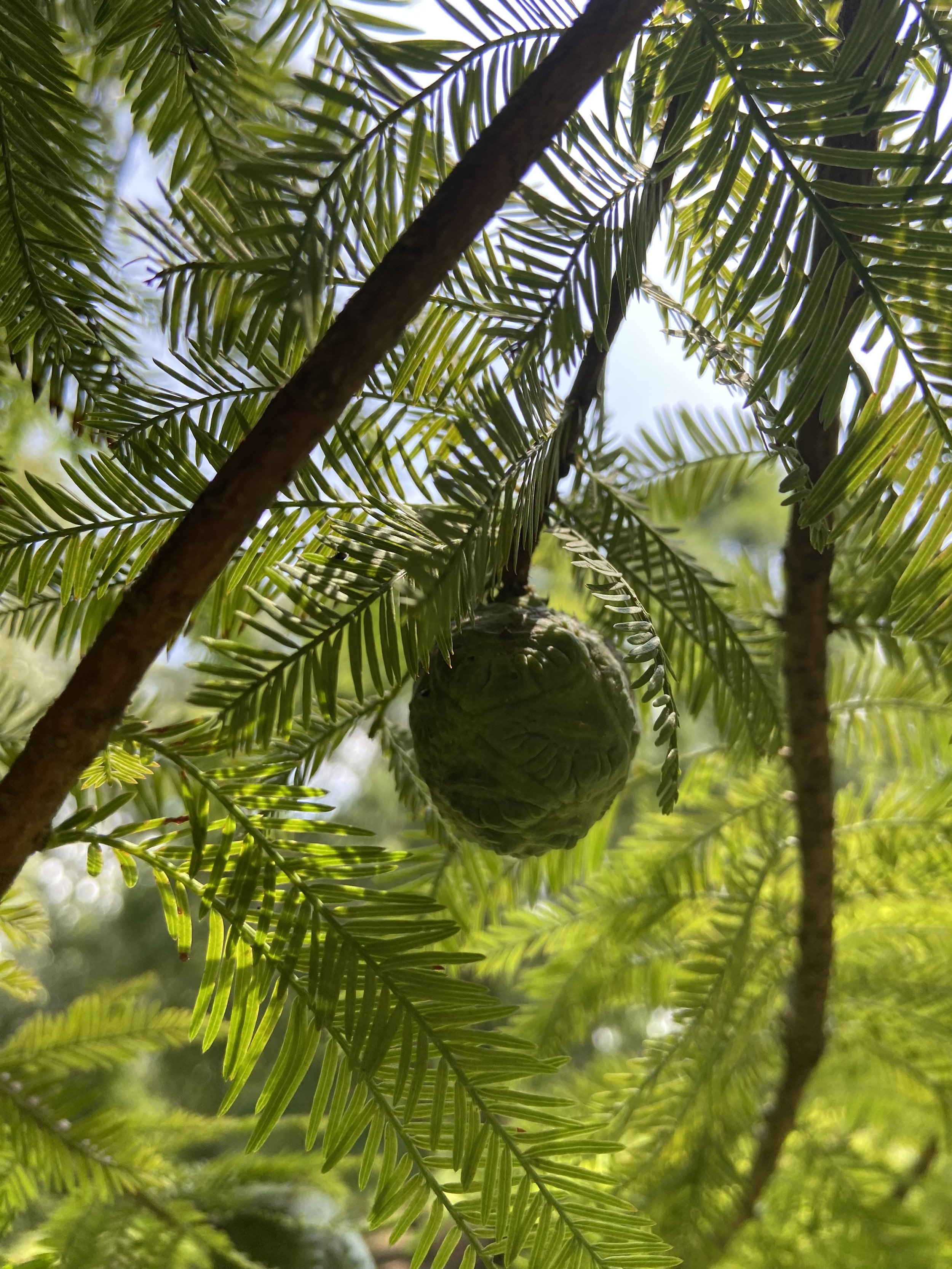
Woods Keeper at
Grant Park

Grant Park Summer Update 9.1.24
Summer is when you’ll find us focusing on the timely removal of invasive stiltgrass (Microstegium vimineum) and chaff flower (Achyranthes japonica) — both prolific seeders in the summer months. Over the past 2 years we’ve done a great job removing and suppressing chaff flower from the Wetlands area with only some remnants remaining. We will continue to be persistent with the stiltgrass as we encourage native perennials to compete with the annual invasive grass. Native perennials like Virginia whitegrass (Leersia virginica) and Cherokee sedge (Carex cherokeensis) in which we collected seed from nearby populations.
Additionally, work continues in the Constitution Springs area as we remove the invasive shrub and vine layer, opening sight lines and beautifying the space in the process. We’ve uncovered a variety of wonderful native plants including Sassafras, Azaleas, Black Tupelo and more!
As always, if you see us working don’t be shy. Say hi and ask any questions you may have. We love to spread awareness — the importance of native plants and the devastating effects of invasive species. See you out there!
- Woods Keeper
Removed invasive plants from one of our August workdays including bush honeysuckle, Chinese holly, honeysuckle vine, white mulberry, privet, autumn olive and more
Native
Sassafras
Sassafras albidum
Native
Cherokee sedge
Carex cherokeensis
In November of 2022 Woods Keeper began work at Grant Park, beginning in the “wetlands” area near Cherokee Avenue. Majestic bald cypress and river birch trees stand tall while native asters and other wetland plants provide for local wildlife. Several planted native button bushes (Cephalanthus occidentalis) dot the area and it’s impossible to miss the stand of gigantic irises. Invasive plants such as honeysuckle, chaff flower, privet, English ivy, and stiltgrass threaten this space and others around the park as they spread rapidly and crowd out native species.
Woods Keeper’s focus is to remove and suppress these harmful non-native invasive plants so that native plants — plants that provide for the local ecosystem — can continue to exist and better yet, thrive. Biodiversity is the goal while beautification and improved visibility are the perks of the process. Check back here for updates or come enjoy another walk in this beautiful, historic park and see for yourself!
**Does native habitat restoration mean every plant that’s non-native will be removed? No. We believe non-native plants can have a place in landscapes as long as they are not invasive. This issue is not black and white and often requires a nuanced discussion involving the specifics of the site.
Winter is a great time for removal as most natives are dormant, making some invasive plants easy to spot as they are often evergreen.
Cypress knees have long stumped scientists about their purpose but they are unique and wonderful, that’s for sure!
















